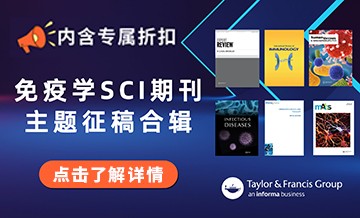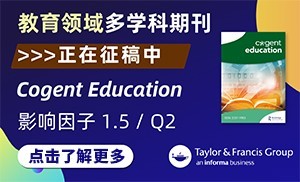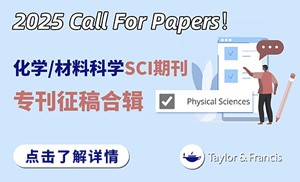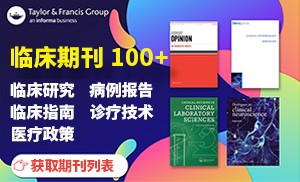样式: 排序: IF: - GO 导出 标记为已读
-
LogiTide2DEM: A method for reconstructing intertidal topography in complex tidal flats using logistic regression with multi-temporal Sentinel-2 and Landsat imagery Int. J. Appl. Earth Obs. Geoinf. (IF 7.6) Pub Date : 2025-04-25
Yi-Chin Chen, Su-Fen WangIntertidal zones are transitional areas between marine and terrestrial systems and are significant for ecological systems, socio-economic activities, and coastal erosion mitigation. However, intertidal topography is often degraded and lost by natural coastal processes and anthropogenic impacts. Accurate and frequent mapping of intertidal topography is essential for effective coastal management. Previous
-
Estimating characteristics of planted forests’ relative yield index using low pulse density LiDAR and satellite remote sensing Int. J. Appl. Earth Obs. Geoinf. (IF 7.6) Pub Date : 2025-04-25
Asahi Hashimoto, Shodai Inokoshi, Chen-Wei Chiu, Yuichi Onda, Takashi Gomi, Yoshimi UchiyamaThe increased demand for forest management, particularly thinning, in Japan is a direct consequence of aging planted forests. However, forest inventories (FI) in Japan lack crucial details regarding the developmental stage or ecological status of forests, often only providing tree species, age, and owner information. The relative yield index (Ry) is a forest density index widely used in the forestry
-
Farm-scale mapping of compost and digestate spreadings from Sentinel-2 and Sentinel-1 Int. J. Appl. Earth Obs. Geoinf. (IF 7.6) Pub Date : 2025-04-25
Maxence Dodin, Florent Levavasseur, Antoine Savoie, Lucie Martin, Emmanuelle VaudourAccording to few recent studies, exogenous organic matters (EOM) can be detectable on either emerging vegetation or bare soil using optical and radar remote sensing techniques. Nevertheless, these image processing approaches considered one single EOM, one season and/or year only and were limited to one surface condition prior to spreading. So far no method addressed the simultaneously tracking of both
-
SLIP-flood: Soft-combination of Swin Transformer and Lightweight Language-Image Pre-training for Flood Images Classification Int. J. Appl. Earth Obs. Geoinf. (IF 7.6) Pub Date : 2025-04-25
Heng Tang, Xiaoping Rui, Jiarui Li, Ninglei Ouyang, Yiheng Xie, Xiaodie Liu, Yiming BiFlood monitoring is a complex task involving multimodal data mining and multitask collaboration. In order to leverage the role of multimodal data in flood management, conducting visual-language pretraining (VLP) in the field of flood disaster monitoring and obtaining foundational pretraining models that are suitable for multiple downstream flood-related tasks is an urgent problem that needs to be addressed
-
Predicting crop yield lows through the highs via binned deep imbalanced regression: A case study on vineyards Int. J. Appl. Earth Obs. Geoinf. (IF 7.6) Pub Date : 2025-04-25
Hamid Kamangir, Brent S. Sams, Nick Dokoozlian, Luis Sanchez, J. Mason EarlesCrop yield estimation is vital for agricultural management but often struggles with predicting extreme values that can significantly impact operations and markets. Traditional models face challenges with these extremes, leading to biased and inaccurate predictions. To address this challenge, our study introduces two innovative strategies. First, we propose a cost-sensitive loss function, ExtremeLoss
-
Comparative analysis of different algorithms for VAS station land cover classification with limited training points Int. J. Appl. Earth Obs. Geoinf. (IF 7.6) Pub Date : 2025-04-24
D. García-Rodríguez, A. Pérez-Hoyos, B. Martínez, Pablo Catret Ruber, J. Javier Samper-Zapater, E. López-Baeza, J.J. Martínez DuráThe Valencian Anchor Station (VAS) (Spain) is an outstanding site operating as a central location for calibrating and validating numerous remote sensing instruments and products. Hence, an accurate characterization of its land cover is required. This research conducts a land cover classification within the VAS station (10 × 10 km2) and its surrounding area (30 × 30 km2) for 2021 using multi-temporal
-
Assessing habitat fragmentation in highly urbanized area: Implications for mitigating landscape dissection and habitat restoration Int. J. Appl. Earth Obs. Geoinf. (IF 7.6) Pub Date : 2025-04-23
Wei Hou, Jixian Zhang, Zihao Peng, Ulrich WalzEffective measurement and monitoring of habitat fragmentation are essential for achieving the United Nations’ Sustainable Development Goals, especially given the ongoing global expansion of urbanization. However, current researches primarily address habitat connectivity or landscape dissection separately, while neglecting the impact of landscape dissection on habitat pattern. In this study, we adopt
-
Adaptive sequential estimator for InSAR time series phase estimation Int. J. Appl. Earth Obs. Geoinf. (IF 7.6) Pub Date : 2025-04-23
Guanya Wang, Zhiwei Li, Han Gao, Jun Hu, Mi Jiang, Peng Ren, Jie ZhangThe coherence estimation errors in phase linking can be mitigated through the weighted alignment of interferometric pairs and the intermediate filtering of data subsets. The Sequential Estimator (SE) serves as a representative method. It divides the coherence-weighted matrix into smaller subsets, using image compression and recursive estimation to enhance phase linking. However, the SE method has inherent
-
A novel approach of generating pseudo revisited soil sample data based on environmental similarity for space-time soil organic carbon modelling Int. J. Appl. Earth Obs. Geoinf. (IF 7.6) Pub Date : 2025-04-23
Wenkai Cui, Lin Yang, Lei Zhang, Chenconghai Yang, Chenxu Zhu, Chenghu ZhouSoil Organic Carbon (SOC) is vital for the global carbon cycle, agricultural sustainability, and climate change. Process-based models like Rothamsted carbon model (RothC) simulate SOC dynamics, but their accuracy relies on revisited soil samples for calibration, which are often scarce, especially in environmentally heterogeneous regions. This study proposes a novel approach to generate pseudo revisited
-
Accounting for temporal and spatial autocorrelation to examine the effects of climate change on vegetation greenness trend in China Int. J. Appl. Earth Obs. Geoinf. (IF 7.6) Pub Date : 2025-04-21
Lingwei Chen, Likai Zhu, Cuiyutong Yang, Zizhen Dong, Rui Huang, Jijun Meng, Min LiuTrend and attribution analysis of vegetation greenness is crucial to explain and predict ecosystem responses to climate change. The common practice to detect and explain greenness pattern from remote sensing time series is mostly based on pixel-by-pixel analysis, which often fails to account for spatial autocorrelation and may lead to spurious patterns. Here we applied the Partitioned Autoregressive
-
Variation mechanisms of suspended sediment concentration in complex estuary determined through remote sensing, observation and modeling coupling Int. J. Appl. Earth Obs. Geoinf. (IF 7.6) Pub Date : 2025-04-21
Mingliang Zhang, Zixuan Lang, Yuling LiuSuspended sediments are vital indicators of water quality, so understanding the dynamic processes and influence factors of suspended sediment concentration (SSC) is crucial in estuaries or coastal waters. This study presents a comprehensive strategy for coupling several methods of remote sensing, field observation, and numerical simulation to systematically study spatio-temporal variability of suspended
-
Tree species classification using intensity patterns from individual tree point clouds Int. J. Appl. Earth Obs. Geoinf. (IF 7.6) Pub Date : 2025-04-21
Andreas Tockner, Ralf Kraßnitzer, Christoph Gollob, Sarah Witzmann, Tim Ritter, Arne NothdurftPersonal laser scanning has evolved into a cutting-edge technology for obtaining fast and accurate biometric measurements of individual trees in a forest. However, recent studies assessing tree species labels on single tree point clouds have been insufficiently accurate in complex forest ecosystems; moreover, explainability of machine-learning methods used in published studies has been insufficient
-
Flood Index-Enhanced deep learning model for coastal inundation mapping in SAR imagery Int. J. Appl. Earth Obs. Geoinf. (IF 7.6) Pub Date : 2025-04-19
Wantai Chen, Yinfei Zhou, Xiaofeng LiThis study introduces a flood index-enhanced deep learning model for coastal inundation mapping leveraging dual-polarization and bitemporal Sentinel-1 synthetic aperture radar (SAR) imagery. The proposed model, FIE-Net, introduces two key innovations to improve flood mapping accuracy. First, it integrates the Ratio Image (RI), a primary flood index derived from bitemporal SAR data, which provides a
-
Spatially predicting ecosystem service patterns in boreal drained peatlands forests using multisource satellite data Int. J. Appl. Earth Obs. Geoinf. (IF 7.6) Pub Date : 2025-04-19
Kaapro Keränen, Anwarul Islam Chowdhury, Parvez RanaBoreal drained-peatland forests provide diverse, interlinked ecosystem services (ESs), critical for informed decision-making in forest management. We mapped five ESs: bilberry yield, visual amenity, biodiversity conservation, carbon storage, and timber production using Landsat 8–9, Sentinel-2, and PlanetScope data. By combining these five ESs variables, we calculated a summed-ESs variable to capture
-
Improving subpixel impervious surface estimation based on point of interest (POI) data Int. J. Appl. Earth Obs. Geoinf. (IF 7.6) Pub Date : 2025-04-18
Junzhe Wang, Wang Jin, Zheng Cao, Zhiyi Pan, Guang Yang, Yaolong ZhaoAccurate estimation of impervious surface area (ISA) at the subpixel level is essential for understanding urbanization and its environmental impacts. In recent years, point-of-interest (POI) data has demonstrated unique value for urban studies. However, its potential for improving subpixel ISA estimation has yet to be fully realized. This research seeks to overcome the challenges of fusing POI data
-
Quantifying key indicators of essential biodiversity variables for mangrove species in response to hydro-meteorological factors Int. J. Appl. Earth Obs. Geoinf. (IF 7.6) Pub Date : 2025-04-17
Hang Yao, Bolin Fu, Weiwei Sun, Yuyu Zhou, Yeqiao Wang, Weiguo Jiang, Hongchang He, Zhili Chen, Yiji SongMangroves are critical for climate mitigation and biodiversity conservation, yet their spatiotemporal dynamics and physiological responses to hydrometeorological drivers remain poorly understood. This study extracted three essential biodiversity variables (area distribution, phenology, and physiological traits) and further revealed their dependencies on hydrometeorological conditions. We developed
-
Leveraging moisture elimination and hybrid deep learning models for soil organic carbon mapping with multi-modal remote sensing data Int. J. Appl. Earth Obs. Geoinf. (IF 7.6) Pub Date : 2025-04-15
Yilin Bao, Xiangtian Meng, Weimin Ruan, Huanjun Liu, Mingchang Wang, Abdul Mounem MouazenPrecision management of soil organic carbon (SOC) is crucial for regulating the global carbon cycle and ensuring food security. Currently, SOC prediction remains challenging due to unresolved moisture disturbances, underutilized multimodal remote sensing data, and uncertain model transferability. To address these challenges, a new paradigm integrating moisture elimination with advanced hybrid deep
-
Enhancing global aerosol retrieval from satellite data via deep learning with mutual information estimation Int. J. Appl. Earth Obs. Geoinf. (IF 7.6) Pub Date : 2025-04-14
Xiaohu Sun, Yong Xue, Lin SunSatellite-based data can provide continuous aerosol observations but suffer from significant uncertainties across various regions. Transfer learning improves model generalization, yet its application in atmospheric research remains limited. Here, we introduce an innovative framework for retrieving global aerosol optical depth (AOD) which named the Aerosol domain-Adaptive Network (AAdaN). The framework
-
Extraction of built-up areas using Sentinel-1 and Sentinel-2 data with automated training data sampling and label noise robust cross-fusion neural networks Int. J. Appl. Earth Obs. Geoinf. (IF 7.6) Pub Date : 2025-04-14
Yu Li, Patrick Matgen, Marco ChiniUp-to-date mapping of built-up areas is of paramount importance for urban planning, environmental monitoring, and disaster management. In recent years, there has been a growing interest in employing supervised machine learning and deep learning methods to map built-up areas using satellite SAR and optical data. However, the laborious and expensive task of gathering and maintaining a vast array of diverse
-
Snow depth inversion and mapping at 500 m resolution from 1980 to 2020 in Northeast China using radiative transfer model and machine learning Int. J. Appl. Earth Obs. Geoinf. (IF 7.6) Pub Date : 2025-04-13
Yanlin Wei, Xiaofeng Li, Lingjia Gu, Zhaojun Zheng, Xingming Zheng, Tao JiangAccurate snow cover parameter assessment and mapping at a fine resolution can have profound implications for our understanding of the planet’s water balance and energy dynamics. Passive microwave (PMW) remote sensing is among the most effective methods for snow depth (SD) retrieval. However, significant uncertainties persist in SD retrieval and mapping due to snow characteristic variations, forest
-
Local pathways of association Int. J. Appl. Earth Obs. Geoinf. (IF 7.6) Pub Date : 2025-04-13
Jiao Hu, Rui Qu, Yongze Song, Peng WuSpatial association reveals the interconnected nature of geographical phenomena, describing the interactions and influences of environmental variables across geographic space. Path analysis can explore complex causal relationships between variables by analyzing path coefficients. However, in large-scale studies, path analysis methods are often affected by local effects, which can influence the accuracy
-
A 10-meter global terrace mapping using sentinel-2 imagery and topographic features with deep learning methods and cloud computing platform support Int. J. Appl. Earth Obs. Geoinf. (IF 7.6) Pub Date : 2025-04-13
Yifan Li, Fuyou Tian, Miao Zhang, Hongwei Zeng, Shukri Ahmed, Xinli Qin, Yanxu Liu, Lizhe Wang, Runyu Fan, Bingfang WuTerrace agriculture plays a vital role in mountainous regions by preventing soil erosion, optimizing land use, and supporting local ecosystems. However, research on the global distribution of terraces is limited due to the lack of unified automatic identification model. Despite the rapid advancements in deep-learning architectures in recent years, their performance in extracting terrace maps still
-
More intelligent knowledge graph: A large language model-driven method for knowledge representation in geospatial digital twins Int. J. Appl. Earth Obs. Geoinf. (IF 7.6) Pub Date : 2025-04-13
Jinbin Zhang, Jun Zhu, Zhihao Guo, Jianlin Wu, Yukun Guo, Jianbo Lai, Weilian LiKnowledge graphs (KGs) can describe the nature and relationships of geographic entities and are an essential knowledge base for realizing geospatial digital twins (GDTs). However, existing KGs make it challenging to describe dynamic geographic entities under geographic spatiotemporal evolution accurately. Furthermore, they are constrained by the professional backgrounds of their users, which hinders
-
GPP estimation by transfer learning with combined solar-induced chlorophyll fluorescence and eddy covariance data Int. J. Appl. Earth Obs. Geoinf. (IF 7.6) Pub Date : 2025-04-13
Yongming Ma, Xiaobin Guan, Yuchen Wang, Yuyu Li, Dekun Lin, Huanfeng ShenGross primary productivity (GPP) plays a crucial role in the carbon exchange between the atmosphere and terrestrial ecosystems. Eddy covariance (EC) method can obtain accurate GPP at the site level, but the sparse distribution limits representativeness. Satellite solar-induced chlorophyll fluorescence (SIF) serves as emerging data of large-scale GPP, yet there are still limitations in its conversion
-
Accurate sub-seasonal root-zone soil moisture prediction using attention-based autoregressive transfer learning and SMAP data Int. J. Appl. Earth Obs. Geoinf. (IF 7.6) Pub Date : 2025-04-11
Lei Xu, Xihao Zhang, Xi Zhang, Tingtao Wu, Hongchu Yu, Wenying Du, Zeqiang Chen, Nengcheng ChenRoot zone soil moisture (RZSM) is an important hydrological variable for agricultural planning and water resources management. The Soil Moisture Active Passive Level 4 (SMAP L4) data demonstrates great value in RZSM estimation. Accurate sub-seasonal RZSM prediction based on SMAP L4 holds great significance for agricultural management and drought assessment. Current deep learning-based RZSM prediction
-
SASTGCN: Semantic-Augmented Spatio-temporal graph convolutional network for subway flow prediction Int. J. Appl. Earth Obs. Geoinf. (IF 7.6) Pub Date : 2025-04-11
Shiyuan Jin, Changfeng Jing, Sheng Yao, Yushan Zhang, Pu Zhao, Jinlong ZhangDeep learning based subway passenger flow prediction was widely employed to promote prediction accuracy, which is crucial for subway management and commercial infrastructure planning. However, the existing work ignored the semantic similarity inherent in the subway stations function, which can extract passengers and enhance prediction accuracy. In this work, a Semantic-Augmented Spatio-temporal Graph
-
Decoding spatial consistency of multi-Source land cover products in China: Insights from heterogeneous landscapes Int. J. Appl. Earth Obs. Geoinf. (IF 7.6) Pub Date : 2025-04-11
Yanglin Cui, Chunjiang Zhao, Yuchun Pan, Kai Ma, Xiaojun Liu, Xiaohe GuHigh-resolution land cover (LC) data are essential for ecological monitoring and resource management, especially in heterogeneous landscapes containing diverse LC types. With the growing of available LC products, a comprehensive evaluation of their classification accuracy and spatial consistency is important for users’ selection and application. In this study, we compared eight widely used LC products
-
Improving crop condition monitoring using phenologically aligned vegetation index anomalies – A case study in central Iowa Int. J. Appl. Earth Obs. Geoinf. (IF 7.6) Pub Date : 2025-04-11
Haoteng Zhao, Feng Gao, Martha Anderson, Richard Cirone, Geba Jisung ChangTimely monitoring of crop conditions is essential for optimizing and assessing agricultural management. Vegetation indices (VIs) derived from remote sensing data can be useful for assessing crop conditions on a large spatial scale. Traditional crop condition assessments compare a VI in the current year to a baseline VI, averaged over multiple years. However, comparing VIs across years by calendar day
-
Estimating water levels in reservoirs using Sentinel-2 derived time series of surface water areas: A case study of 20 reservoirs in Burkina Faso Int. J. Appl. Earth Obs. Geoinf. (IF 7.6) Pub Date : 2025-04-11
Audrey Kantz Dossou Codjia, Komlavi Akpoti, Moctar Dembélé, Roland Yonaba, Tazen Fowe, Soumahila Sankande, Modeste G. Déo-Gratias Koissi, Sander J. ZwartReservoirs play a significant role in the mobilization of water resources in Burkina Faso, contributing to the management and availability of water for various purposes. Operational management of reservoirs requires accurate and timely water level information, which remote sensing can provide cost-effectively and with limited resources. In this study, the surface area of 20 reservoirs is first determined
-
A SAR wave-enhanced method combining denoising and texture enhancement for bathymetric inversion Int. J. Appl. Earth Obs. Geoinf. (IF 7.6) Pub Date : 2025-04-11
Aijun Cui, Yi Ma, Jingyu Zhang, Ruifu WangThe wave phenomena in SAR images are able to provide water depth information. SAR ocean images are often characterized by unclear wave texture and strong speckle noise, which will hinder the bathymetric inversion. Denoising and texture enhancement are two strategies to improve image quality. However, noise reduction may blur textures, while texture enhancement may amplify noise. To address this, we
-
Analyzing the impact of area of interest (AOI) size and endmember selection on evapotranspiration (ET) estimation through a contextual model (SEBAL) Int. J. Appl. Earth Obs. Geoinf. (IF 7.6) Pub Date : 2025-04-11
Hamza Barguache, Jamal Ezzahar, Jamal Elfarkh, Said Khabba, Salah Er-Raki, Valerie Le Dantec, Mohamed Hakim Kharrou, Ghizlane Aouade, Abdelghani ChehbouniAccurate estimation of evapotranspiration (ET) is essential for effective water resource management, particularly in arid and semi-arid areas. Advancements in remote sensing technology have made ET models indispensable, offering high-resolution spatial and temporal assessments. Contextual models such as the Surface Energy Balance Algorithm for Land (SEBAL) are particularly valuable for ET estimation
-
Frequent drought and flood events in the Yellow River Basin, increasing future drought trends in the middle and upper reaches Int. J. Appl. Earth Obs. Geoinf. (IF 7.6) Pub Date : 2025-04-11
Jianming Feng, Tianling Qin, Xizhi Lv, Shanshan Liu, Jie Wen, Juan ChenUnder global warming, the Yellow River Basin (YRB), serving as an ecological barrier and climate-sensitive region in northern China, faces severe challenges such as frequent extreme droughts and floods, as well as intensifying water resource supply–demand conflicts. To systematically assess the evolution of droughts and floods in the YRB, this study utilizes observational data from 137 meteorological
-
Assessing change point detection methods to enable robust detection of early stage Artisanal and Small-Scale mining (ASM) in the tropics using Sentinel-1 time series data Int. J. Appl. Earth Obs. Geoinf. (IF 7.6) Pub Date : 2025-04-09
Mensah Isaac Obour, Barrett Brian, Cahalane ConorArtisanal and Small-Scale mining (ASM) provides essential livelihoods for many in developing countries but often lacks regulation, leading to environmental issues such as water pollution and deforestation. Timely and accurate mapping of ASM activities is vital for responsible mining that benefits the environment and local communities. Synthetic Aperture Radar (SAR) is crucial for regular ASM monitoring
-
Large-area urban TomoSAR method with limited a priori knowledge and a complex deep learning model Int. J. Appl. Earth Obs. Geoinf. (IF 7.6) Pub Date : 2025-04-08
Haoxuan Duan, Yuzhou Liu, Hong Zhang, Peifeng Ma, Zhongqi Shi, Zihuan Guo, Yixian Tang, Fan Wu, Chao WangBuildings are crucial to cities, and tomographic synthetic aperture radar (TomoSAR) is an important tool for monitoring the heights, linear deformations and thermal amplitudes of buildings. However, existing TomoSAR height inversion methods do not fully leverage a priori knowledge, compromising the accuracy of deformation estimation; deep learning-based methods involve the integration of multiple steps
-
DMP-PUNet: A novel network for two-dimensional InSAR phase unwrapping under severe noise and complex fringes conditions Int. J. Appl. Earth Obs. Geoinf. (IF 7.6) Pub Date : 2025-04-08
Yu Chen, Shuai Wang, Yandong Gao, Yanjian Sun, Jinqi Zhao, Kun Tan, Peijun DuIn the processing of Interferometric synthetic aperture radar (InSAR) data, two-dimensional (2-D) phase unwrapping (PU) is crucial for ensuring the quality of InSAR data inversion. Traditional methods, based on the assumption of phase continuity, often struggle with abrupt terrain changes and the influence of severe noise, leading to poor performance or failure. To address these challenges, this paper
-
Seamless global daily soil moisture mapping using deep learning based spatiotemporal fusion Int. J. Appl. Earth Obs. Geoinf. (IF 7.6) Pub Date : 2025-04-08
Menghui Jiang, Tian Qiu, Ting Wang, Chao Zeng, Boxuan Zhang, Huanfeng ShenSoil moisture products with long-term, high spatial continuity, and high accuracy are essential for meteorological management and hydrological monitoring. Microwave remote sensing retrieval and land surface model simulation are the two primary sources of global-scale soil moisture data, but each has inherent limitations, making it difficult to balance accuracy and spatial coverage. In this paper, to
-
ESMII-Net: An edge-synergy and multidimensional information interaction network for remote sensing change detection Int. J. Appl. Earth Obs. Geoinf. (IF 7.6) Pub Date : 2025-04-08
Yixin Chen, Xiaogang Ning, Ruiqian Zhang, Hanchao Zhang, Xiao Huang, You HeIn recent advancements, deep learning-based methods for change detection have demonstrated rapid capabilities to identify alterations across extensive regions, underscoring significant research and application potential in remote sensing change detection. Nonetheless, these methods currently encounter limitations in feature extraction, often leading to blurred edges and challenges in identifying small-scale
-
BANet: A bilateral attention network for extracting changed buildings between remote sensing imagery and cadastral maps Int. J. Appl. Earth Obs. Geoinf. (IF 7.6) Pub Date : 2025-04-08
Qingyu Li, Lichao Mou, Yilei Shi, Xiao Xiang ZhuUp-to-date cadastral maps are vital to local governments in administrating real estate in cities. With its growing availability, remote sensing imagery is the cost-effective data for updating semantic contents on cadastral maps. In this study, we address the problem of updating buildings on cadastral maps, as city renewal is mainly characterized by new construction and demolition. While previous works
-
Estimating and mapping tailings properties of the largest iron cluster in China for resource potential and reuse: A new perspective from interpretable CNN model and proposed spectral index based on hyperspectral satellite imagery Int. J. Appl. Earth Obs. Geoinf. (IF 7.6) Pub Date : 2025-04-05
Haimei Lei, Nisha Bao, Moli Yu, Yue CaoIron tailings are crystalline powders predominantly composed of iron (Fe) and silicon dioxide (SiO2). Spatially characterizing the physical and chemical properties of iron tailings is greatly important for optimal utilization and proper disposal of tailings. Visible-near infrared-shortwave infrared (VIS-NIR-SWIR; 350–2500 nm) spectroscopy offers a rapid, non-destructive, and cost-effective method for
-
WHU-RuR+: A benchmark dataset for global high-resolution rural road extraction Int. J. Appl. Earth Obs. Geoinf. (IF 7.6) Pub Date : 2025-04-04
Ningjing Wang, Xinyu Wang, Yang Pan, Wanqiang Yao, Yanfei ZhongEfficient and accurate extraction of road networks from high-resolution satellite images is essential for urban planning, construction, and traffic management. Recently, various road datasets and advances in deep learning models have greatly enhanced road extraction techniques. However, challenges remain when trying to apply existing research to rural areas. Specifically, most public road datasets
-
S2-IFNet: A spatial-semantic information fusion network integrated with boundary feature enhancement for forest land extraction from Sentinel-2 data Int. J. Appl. Earth Obs. Geoinf. (IF 7.6) Pub Date : 2025-04-03
Junyang Xie, Mengyao Zhang, Hao Wu, Anqi Lin, Marcos Adami, Abdul Rashid Mohamed Shariff, Yahui GuoAccurately extracting forest land and understanding its spatial distribution are crucial for forest monitoring and management. However, variations in tree species, human activities, and natural disturbances create diverse and distinct forest land characteristics in remote sensing images, posing challenges for precise forest land extraction. To address these challenges, we propose a spatial-semantic
-
Occlusion mapping reveals the impact of flight and sensing parameters on vertical forest structure exploration with cost-effective UAV based laser scanning Int. J. Appl. Earth Obs. Geoinf. (IF 7.6) Pub Date : 2025-04-03
Matthias Gassilloud, Barbara Koch, Anna GöritzRecent studies have demonstrated the potential of light detection and ranging (LiDAR) from uncrewed aerial vehicles (UAVs) for assessing forest structures. Maximizing data completeness and representativeness is essential to accurately retrieve key structural parameters. However, knowledge on how data acquisition approaches affect canopy volume exploration is sparse. This study investigated the effects
-
Detection of Fall Armyworm infestation in maize fields during vegetative growth stages using temporal Sentinel-2 Int. J. Appl. Earth Obs. Geoinf. (IF 7.6) Pub Date : 2025-04-02
Tatenda Dzurume, Roshanak Darvishzadeh, Timothy Dube, T.S. Amjath Babu, Mutasim Billah, Syed Nurul Alam, Mustafa Kamal, Md. Harun-Or-Rashid, Badal Chandra Biswas, Md. Ashraf Uddin, Md. Abdul Muyeed, Md. Mostafizur Rahman Shah, Timothy J. Krupnik, Andrew NelsonFall Armyworm (FAW), Spodoptera frugiperda (J.E. Smith) (Lepidoptera: Noctuidae), poses a significant risk to global food and income security by attacking various crops, particularly maize. Early detection and management of FAW infestation are crucial for mitigating its impact on crop yields. This study investigated the effect of FAW infestation on the spectral signature of maize fields and classified
-
D[formula omitted]GNN: Double dual dynamic graph neural network for multisource remote sensing data classification Int. J. Appl. Earth Obs. Geoinf. (IF 7.6) Pub Date : 2025-04-01
Teng Yang, Song Xiao, Jiahui QuConvolutional Neural Network (CNN) has garnered attention due to its outstanding performance in multisource remote sensing (RS) image classification. However, classical CNN-based methods primarily concentrate on information within a fixed-size neighborhood and a standard square region, neglecting long-range and global information. As non-Euclidean data, the topological structure enables flexible construction
-
Combining multi-source data to investigate vessel wake temperature gradients and dynamic patterns Int. J. Appl. Earth Obs. Geoinf. (IF 7.6) Pub Date : 2025-03-31
Mengqi Lyu, Liyuan Li, Wencong Zhang, Long Gao, Yifan Zhong, Jingjie Jiao, Xiaoyan Li, Fansheng ChenThe movement of a vessel generates cold and warm wake patterns with temperature gradients on the sea surface, which provide detection possibilities for satellite-based infrared detection systems. This work analyzes the temporal characteristics of ship wake dissipation on the sea surface, based on multi-source data from low Earth orbit satellite thermal infrared imaging, Automatic Identification System
-
SAM-CTMapper: Utilizing segment anything model and scale-aware mixed CNN-Transformer facilitates coastal wetland hyperspectral image classification Int. J. Appl. Earth Obs. Geoinf. (IF 7.6) Pub Date : 2025-03-31
Jiaqi Zou, Wei He, Haifeng Wang, Hongyan ZhangAccurate and effective coastal wetland classification using hyperspectral remote sensing technology is crucial for their conservation, restoration, and sustainable development. However, the large scale variance of land covers in complex wetland scenes poses challenges for existing methods and leads to misclassifications. Additionally, existing methods encounter difficulties in practical wetland classification
-
Enhanced NDVI prediction accuracy in complex geographic regions by integrating machine learning and climate data—a case study of Southwest basin Int. J. Appl. Earth Obs. Geoinf. (IF 7.6) Pub Date : 2025-03-24
Zehui Zhou, Jiaxin Jin, Bin Yong, Weidong Huang, Lei Yu, Peiqi Yang, Dianchen SunThe normalized difference vegetation index (NDVI) is a vital metric for assessing vegetation growth, yet accurate prediction remains challenging, particularly in regions with complex geographic and climatic conditions. Machine learning methods offer promise but are often hindered by sensitivity to model structure, input parameters, and training samples. To address these limitations, this study developed
-
Scientists yet to consider spatial correlation in assessing uncertainty of spatial averages and totals Int. J. Appl. Earth Obs. Geoinf. (IF 7.6) Pub Date : 2025-03-23
Alexandre M.J.-C. Wadoux, Gerard B.M. HeuvelinkHigh-resolution maps of climate and ecosystem variables are essential for supporting terrestrial carbon stocks and fluxes estimation, climate change mitigation, and ecosystem degradation assessment. These maps are usually created using remotely sensed data obtained from various types of imagery and sensors. The remote sensing data typically serve as covariates to deliver spatially explicit information
-
Classification of tree mortality following drought-defoliation interaction using single date Landsat imagery and comparison to aerial detection surveys Int. J. Appl. Earth Obs. Geoinf. (IF 7.6) Pub Date : 2025-03-22
Danielle N. Tanzer, Chandi Witharana, Robert T. FaheyForest disturbance regimes are changing across the globe under the influence of climate change and other global change factors, with potentially substantial consequences for tree mortality rates. Tree mortality has been assessed using field and aerial surveys and, more recently, frequently using satellite remote sensing-based techniques. Rapid detection of tree mortality is often important in decision-making
-
Spatio-temporal-text fusion for hierarchical multi-label crop classification based on time-series remote sensing imagery Int. J. Appl. Earth Obs. Geoinf. (IF 7.6) Pub Date : 2025-03-22
Xiyao Li, Jiayi Li, Jie Jiang, Xiaofeng Pan, Xin HuangRecent advances in deep learning have enhanced crop classification, yet current research still underutilizes the hierarchical information of crop types, limiting classification accuracy. As categories are subdivided, the sample imbalance intensifies, posing a challenge to fine classification of crops. To address this, we propose the Class Semantic Guided Hierarchical Segmentation Framework (SemHi framework)
-
High-quality one-shot interactive segmentation for remote sensing images via hybrid adapter-enhanced foundation models Int. J. Appl. Earth Obs. Geoinf. (IF 7.6) Pub Date : 2025-03-22
Zhili Zhang, Xiangyun Hu, Yue Yang, Bingnan Yang, Kai Deng, Hengming Dai, Mi ZhangInteractive segmentation of remote sensing images enables the rapid generation of annotated samples, providing training samples for deep learning algorithms and facilitating high-quality extraction and classification for remote sensing objects. However, existing interactive segmentation methods, such as SAM, are primarily designed for natural images and show inefficiencies when applied to remote sensing
-
Low Saturation Confidence Distribution-based Test-Time Adaptation for cross-domain remote sensing image classification Int. J. Appl. Earth Obs. Geoinf. (IF 7.6) Pub Date : 2025-03-22
Yu Liang, Shilei Cao, Juepeng Zheng, Xiucheng Zhang, Jianxi Huang, Haohuan FuUnsupervised Domain Adaptation (UDA) has emerged as a powerful technique for addressing the distribution shift across various Remote Sensing (RS) applications. However, most UDA approaches require access to source data, which may be infeasible due to data privacy or transmission constraints. Source-free Domain Adaptation addresses the absence of source data but usually demands a large amount of target
-
Spatiotemporal inhomogeneity of accuracy degradation in AI weather forecast foundation models: A GNSS perspective Int. J. Appl. Earth Obs. Geoinf. (IF 7.6) Pub Date : 2025-03-21
Junsheng Ding, Wu Chen, Junping Chen, Jungang Wang, Yize Zhang, Lei Bai, Yuyan Wang, Xiaolong Mi, Tong Liu, Duojie WengThe artificial intelligence (AI) weather forecast foundation models can infer and generate precise global atmospheric state forecasts on the user’s device and with speed over 10,000 times faster than the operational Integrated Forecasting System (IFS), and it is making increasingly significant contributions to geodetic applications represented by the Global Navigation Satellite System (GNSS). However
-
Multi-source data joint processing framework for DEM calibration and fusion Int. J. Appl. Earth Obs. Geoinf. (IF 7.6) Pub Date : 2025-03-20
Cuilin Yu, Qingsong Wang, Zibo Zhang, Zixuan Zhong, Yusheng Ding, Tao Lai, Haifeng Huang, Peng ShenHigh-accuracy digital elevation models (DEMs) are essential for remote sensing and geospatial analysis, yet integrating multi-source data over large and complex terrains remains challenging. To address these challenges, this study presents the Multi-source Data Joint Processing (MDJP) framework. This framework establishes a systematic way for correcting DEM errors of varying quality and integrating
-
Enhanced unsupervised domain adaptation with iterative pseudo-label refinement for inter-event oil spill segmentation in SAR images Int. J. Appl. Earth Obs. Geoinf. (IF 7.6) Pub Date : 2025-03-20
Guangyan Cui, Jianchao Fan, Yarong ZouThe imaging features of oil spills in synthetic aperture radar (SAR) images have significant differences due to factors such as marine environment, SAR sensors, oil film thickness and types, which makes it difficult to obtain a generalized model, and the limited number of SAR images obtained from new oil spill events hampers the effective training of deep learning networks. To solve these issues, an
-
Multitemporal Sentinel and GEDI data integration for overstory and understory fuel type classification Int. J. Appl. Earth Obs. Geoinf. (IF 7.6) Pub Date : 2025-03-20
Pegah Mohammadpour, Domingos Xavier Viegas, Alcides Pereira, Emilio ChuviecoWildfires significantly reshape the landscape of the Mediterranean basin, altering forest composition, structure, and diversity. Consequently, detailed fuel mapping is crucial for improving fire risk assessment and enhancing fire behavior modeling, as wildfires typically ignite from surface fuels and may spread vertically to canopy fuels due to canopy fuel continuity. This study generates a fuel type
-
Assessing urban residents’ exposure to greenspace in daily travel from a dockless bike-sharing lens Int. J. Appl. Earth Obs. Geoinf. (IF 7.6) Pub Date : 2025-03-19
Xijie Xu, Jie Wang, Stefan Poslad, Xiaoping Rui, Guangyuan Zhang, Yonglei Fan, Guangxia YuConsidering the importance of greenspace for the health and life of urban citizens, different levels of greenspace exposure (GE) have received increasing attention. However, the understanding of human travel-related greenspace exposure is still limited, especially the lack of quantitative description of the fine-grained dynamics of greenspace exposure for active travel. Therefore, this study aims to
-
Satellite retrieval of bottom reflectance from high-spatial-resolution multispectral imagery in shallow coral reef waters Int. J. Appl. Earth Obs. Geoinf. (IF 7.6) Pub Date : 2025-03-19
Benqing Chen, Yanming Yang, Mingsen Lin, Bin Zou, Shuhan Chen, Erhui Huang, Wenfeng Xu, Yongqiang TianUnder anthropogenic disturbances and global warming, coral reef ecosystems are degrading, and there is growing concern about the changes in benthic habitats in shallow coral reef waters. As an essential parameter, bottom reflectance can be used to indicate the health of benthic habitats in coral reefs. However, accurately determining bottom reflectance from satellite data remains challenging. This
-
Near real-time land surface temperature reconstruction from FY-4A satellite using spatio-temporal attention network Int. J. Appl. Earth Obs. Geoinf. (IF 7.6) Pub Date : 2025-03-19
Ruijie Li, Hequn Yang, Xu Zhang, Xin Xu, Liuqing Shao, Kaixu BaiLand Surface Temperature (LST) is a critical parameter for climate studies and land surface process models as it indicates ground surface temperature variations across landscapes and timescales. However, satellite-based LST products derived from infrared sensors suffer from substantial missing values due to extensive cloud covers on the Earth’s surface. Traditional methods rely heavily on numerical
-
Deep projective prediction of building facade footprints from ALS point cloud Int. J. Appl. Earth Obs. Geoinf. (IF 7.6) Pub Date : 2025-03-19
Hengming Dai, Jiabo Xu, Xiangyun Hu, Zhen Shu, Wei Ma, Zhifang ZhaoThe automated extraction of building facade footprints (BFFs) is a critical task in surveying and remote sensing. Existing methods primarily use mobile laser scanning point cloud as the data source, with limited methods utilizing airborne laser scanning (ALS) data. This is mainly because current methods require explicit building extraction and wall detection, and the facade points in ALS point clouds







































 京公网安备 11010802027423号
京公网安备 11010802027423号